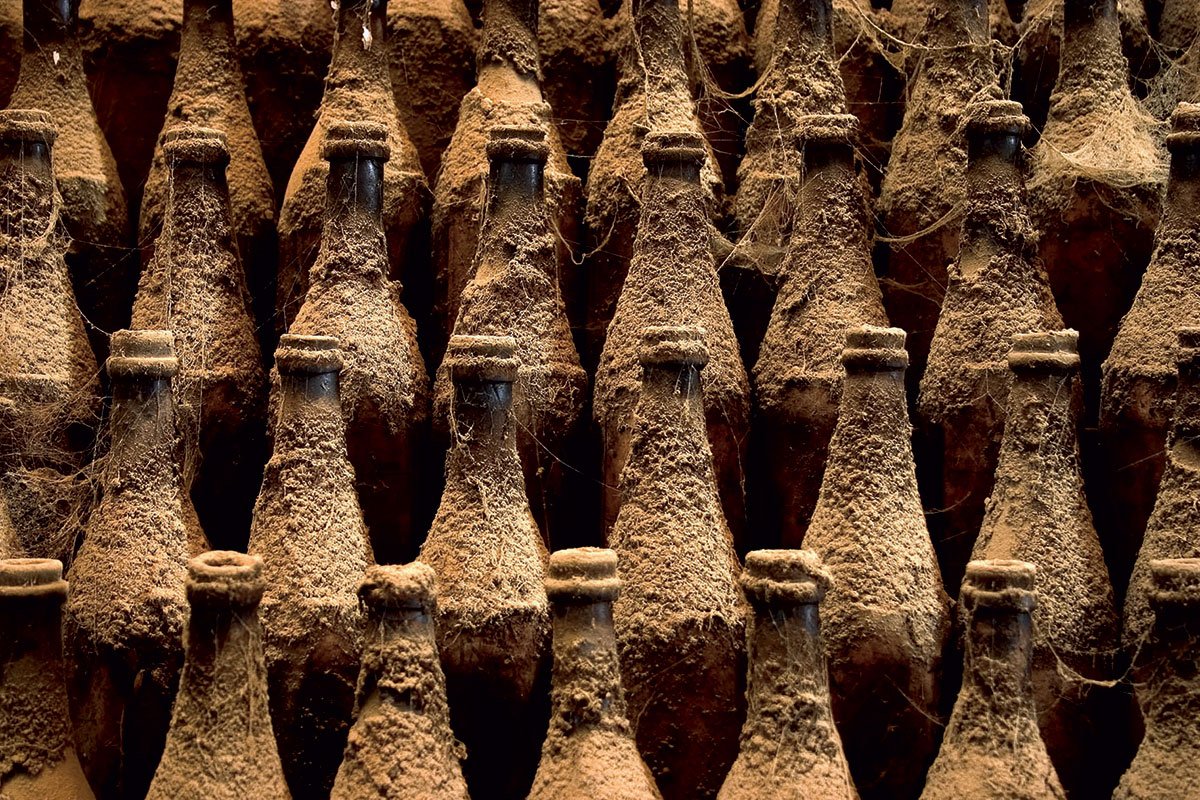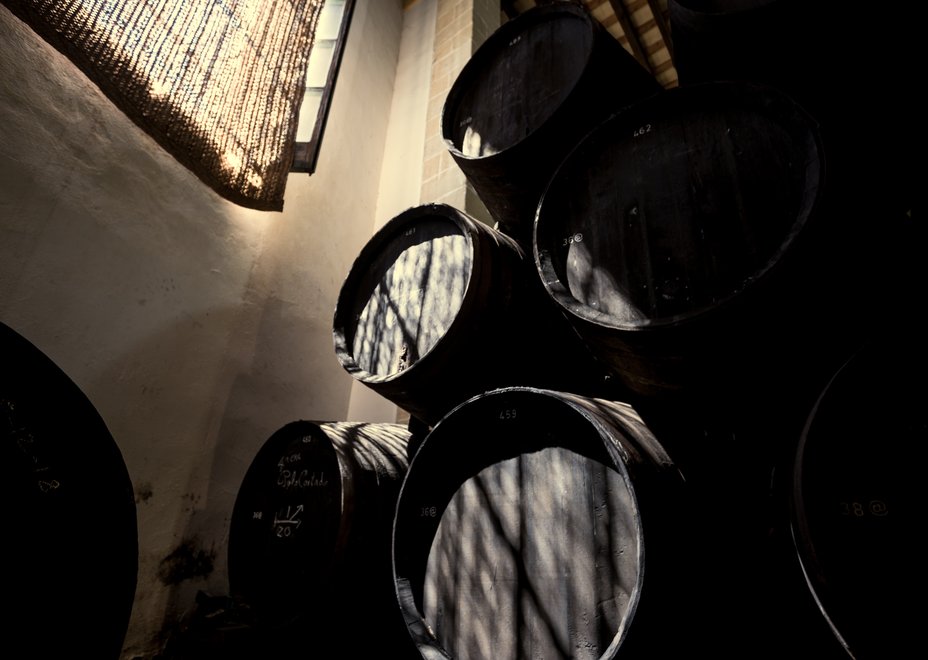

If we have previously identified the type of ageing system (biological or oxidative) and the type of vinifiaction (total or partial fermentation) as being key factors in differentiating different types of sherry, it is no less certain that there remains another parameter of crucial importance when it comes to determining the quality of our wines: time.
Prolonged ageing intensifies the typical characteristics of certain types of sherry wines as a consequence of the permanent process of concentration made possible by the use of wooden casks. In other cases, however, this combination of time and wood confers new characteristics and sensations, bestowing a singularity and roundness upon the wine which can only be achieved after long years of ageing. Biological ageing, by its own very nature, cannot be prolonged over an excessively long period of time.
After an average of seven or eight years, depending upon the microclimatic conditions within the bodega itself, the yeast grows weak having consumed practically all of the nutrients in the wine which provide its sustenance. The film of yeast is thus unable to continue protecting the wine from direct contact with the oxygen in the surrounding air. When we therefore speak of very old sherry wines we always refer to wines which have undergone, or at least most of them, an oxidative or physico-chemical ageing process.
The Consejo Regulador certifies three special categories according to the peculiarities of their ageing:
The Consejo Regulador only certifies sherries of the highest quality which have been aged for an extraordinary long time. Additionally, in order to comply with the terms of Certified Age, said sherry wines must also belong to one of the following types: Amontillado, Oloroso (sweet or dry), Palo Cortado or Pedro Ximénez.
Those sherry firms belonging to the Denomination de Origin are custodians of authentic oenological treasures. Their tasters frequently select lots of wine which, due to their special qualities, are deemed fit to join the criaderas reserved for the most special of sherry wines. Wines that form a part of a solera ageing system whose origins normally reach back to the very origins of the firm itself, usually the nineteenth century but in some cases as far back as the eighteenth. These centuries-old wines are of such exceptional quality that they are rarely put on sale to the public.
Enjoyment of these wines was traditionally the reserve of a privileged few: members of the owner's family or trusted employees who had access to the so-called "sacristies" where they were stored.
They were also served to local dignitaries or personages visiting the Jerez region. It was in the year 2000, however, that the Consejo Regulador of the Denomination of Origin Jerez-Xérès-Sherry created two special categories of Sherry Wines of Certified Age with the aim of awarding these wines an official certification which would enable them to accredit their age and extraordinary quality: Sherry Wines of over twenty years of age (V.O.S.) and Sherry Wines of over thirty years of age (V.O.R.S.).
One of the key factors which characterises Sherry Wines is the ageing method known as "de Criaderas y Soleras". This is a marvellous, perfect dynamic ageing process, but one which makes it impossible to ascertain the exact age of sherry wines, only enabling us to refer to this in average terms.
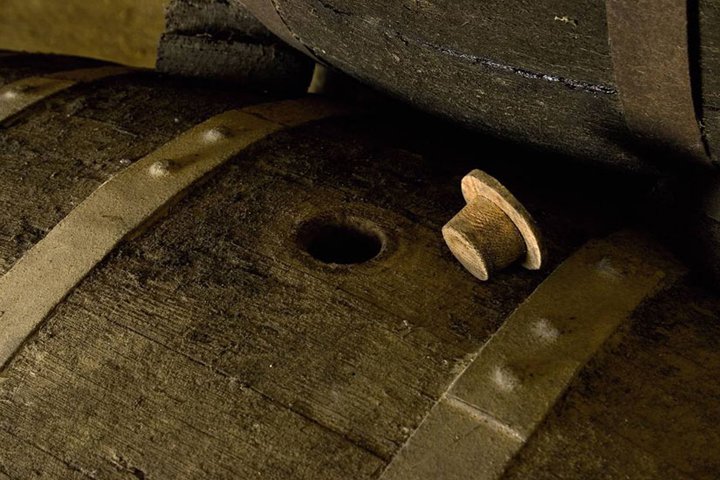
The age certification system developed by the Consejo Regulador is based upon the individual lots (known as "sacas") of this type of wine issued by the different sherry firms. The certification of the Consejo is granted not to a specific commercial brand or type of wine from a particular firm, but to each individual batch drawn from the corresponding solera, with an average age of over twenty years, or of over thirty years.
In order to obtain this certification of quality and age, bodegas have to submit their wines to the judgement of an independent Tasting Committee. This is made up of specialists of accredited expertise and reputation who have no connection of any kind with sherry firms in the Jerez Region. Together with personnel from the Consejo Regulador itself, committee members include academics, technicians and other experts considered to be authorities on sherry tasting. The Tasting Committee analyse and taste samples of sherry from each saca with two distinct aims in view: not just to certify a specific average age, but also to verify that they meet the exceptional standards of quality expected of wines of such special characteristics.
In order to carry out its work the Committee has the complete support of the Estación de Viticultura y Enología de Jerez, one of the best equipped wine laboratories in Spain, which among other tasks analyses those parameters specifically related to the age of the wine samples it receives, such as Carbon 14, ester content, ash or dry extract. Even so, the results of these analyses alone are not considered sufficient to merit the certification of the Consejo if the wine in question fails to satisfy the demanding qualitative standards set by the team of expert tasters.
Moreover, selling sherries of certified age also has an effect upon the authorised sales "quota" applied to each sherry firm.
One of the procedures which guarantee the quality of the Denomination of Origin is the existence of a quota or the percentage of existing stock which each firm is allowed to sell during each campaign. The existence of this system enables the Consejo Regulador to guarantee the minimum age of all sherries. In general terms the quota system demands that for each litre of sherry sold by a Denomination of Origin sherry firm, three litres of the same must remain in stock in its ageing bodegas. This guarantees that all the wine sold is at least three years old.
In the case of Sherries of Certified Age the consumption of the quota corresponding to each lot is logically proportional to the age guaranteed by the Consejo. In other words, for every litre of sherry "over 20 years old" that a firm sells, there must remain at least 20 litres in the corresponding crianza ageing system. Likewise, for a sherry certified as being "over 30 years old" the bodega must leave at least thirty litres remaining in the crianza ageing system for every litre it sells.
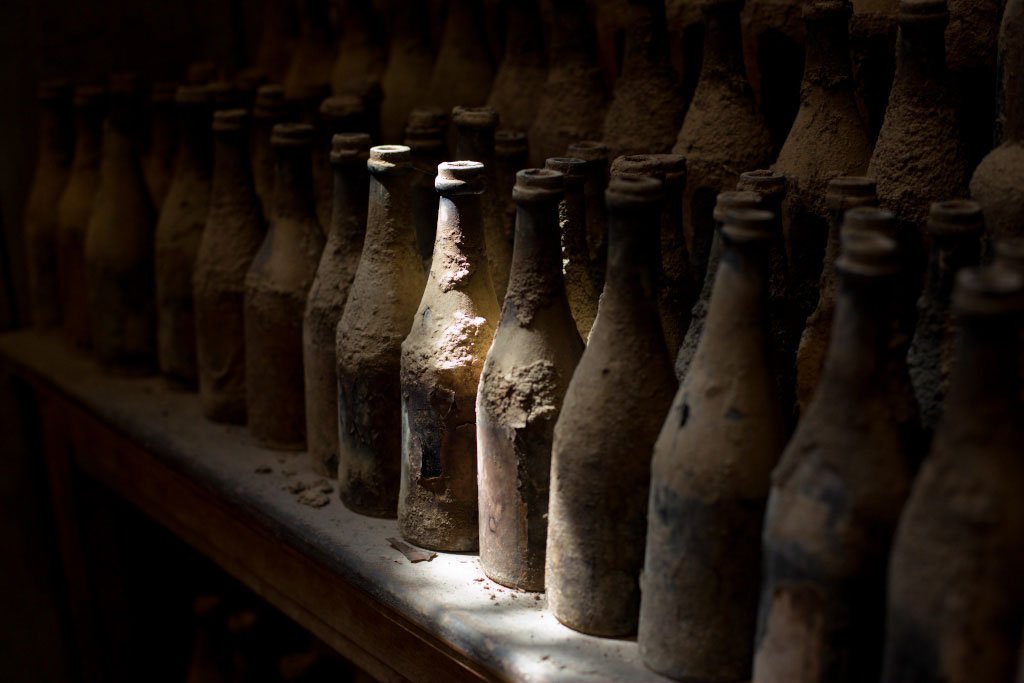
The regulations governing Sherries of Certified Age also stipulate the application of specific terminology. Thus, sherries over 20 years old use the initials V.O.S. which stand for the Latin phrase "Vinum Optimum Signatum" (Wine Selected as Optimal) and also "Very Old Sherry" - the English term used so often on the labels of this type of sherry.
In the case of those sherries over 30 years old, then the acronym used is V.O.R.S., which stands for "Vinum Optimum Rare Signatum" (Wine Selected as Optimal and Exceptional), and which may again be conveniently expressed in English as "Very Old Rare Sherry".
Both the acronyms V.O.S. and V.O.R.S. (together with the full Latin expressions corresponding to their initials) appear on the special seals which the Consejo Regulador use to distinguish certified sherries and must also appear on their labelling.
The age certification system adopted by the Consejo Regulador is also applicable to those sherries which, though never attaining the age of the V.O.S. and V.O.R.S., are nevertheless subjected to prolonged periods of ageing and thus also achieve the highest levels of quality. These are sherries with an average age of between 12 and 15 years and which have, therefore, been submitted, either totally or partially, to an oxidative or physico-chemical ageing process.
Unlike the rigid certification system of individual sacas, or lots, which applies to wines of Certified Age, in the case of sherries of over 12 or 15 years of age the certification issued by the Consejo Regulador applies to the whole system of criaderas and soleras from whence the wine submitted for certification is drawn. Sherry firms consequently enjoy greater flexibility in the amount of this type of wine they wish to draw off, however the control is followed by the Consejo Regulador for the amount produced and the ratio of the solera systems that support these wines.
The process begins when a sherry firm submits an application for certification informing the Consejo Regulador of the stocks of sherry wine corresponding to the brand for which they have requested the indication of age. Those wines undergoing crianza ageing must be clearly identified as such in the bodega and the annual sales quota assigned to them will be proportional to the quantity of stock being held: one-twelfth in the case of 12-year-old wines and one-fifteenth for the 15-year-old ones.
Once the stock has been verified the inspectors of the Consejo Regulador take samples from the solera to be put before the Tasting Committee, who must certify the quality of the same, in addition to carrying out the corresponding analytical tests in order to confirm the age of the wine concerned. This whole process must then be repeated at the beginning of each campaign.
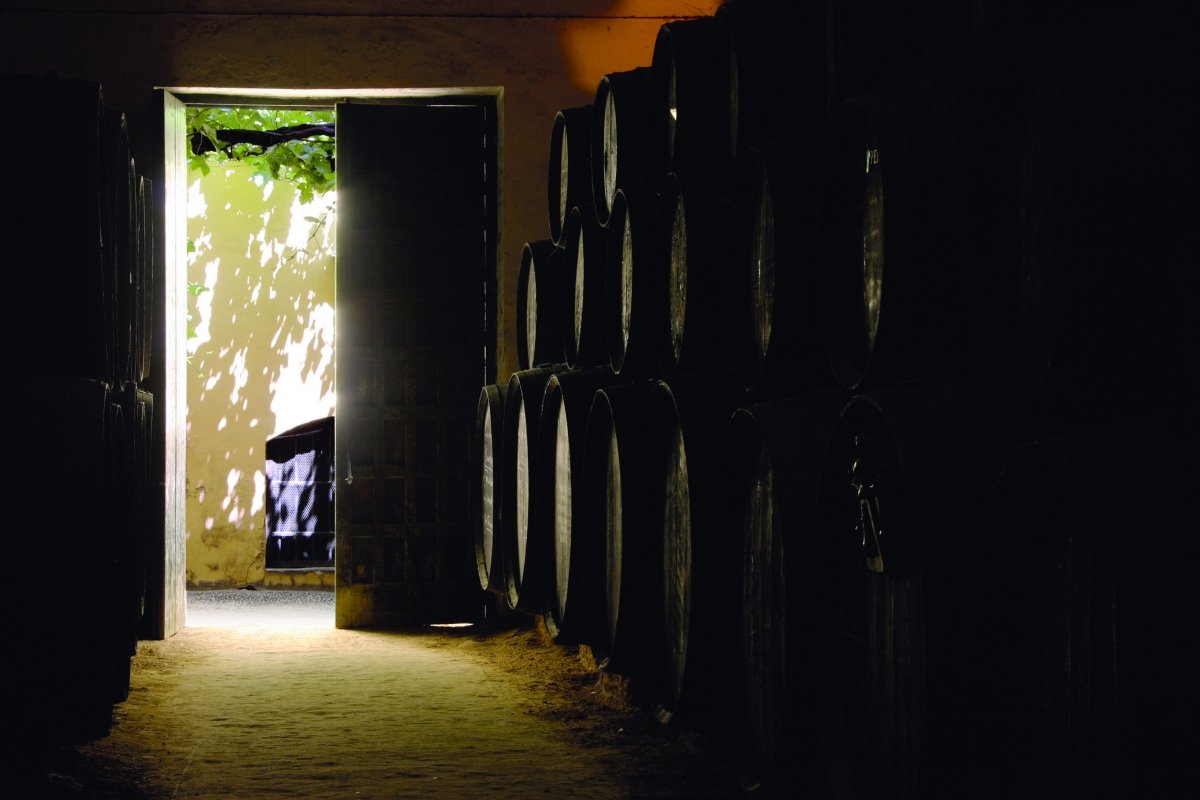
Together with the traditional Criadera and Solera system used to age the vast majority of sherry wine, the Regulations of the Denomination of Origin also allow for the use of the añadas, or vintage system. This is a static ageing system (as opposed to the dynamic criadera and solera system) in which sherry wines from a specific harvest are separately aged and at no time blended with other wines from different years.
In certain years sherry firms select particular lots of must which meet specific standards of quality which are then aged according to the vintage system of añadas. These criteria are very subjective and may differ from one sherry firm to another, but it is clear that the prevailing climatic conditions for each corresponding year, the grapes, and the vinification process employed all have a important part to play. Once the must has been obtained it is fortified and settled in the casks where it will commence an essentially oxidative ageing process.
Even if initial fortification only brings the alcoholic content up to 15%, the film of yeast, the flor, will require periodical doses of nutrients if it is to survive, which means that the cask must be refreshed with young wine. Those casks used to age wines according to the añada, vintage system, however, are stoppered and sealed by the Consejo Regulador, thus limiting the circulation of air within the interior of the cask and consequently any chance of the yeast "breathing".
The certification of a vintage sherry by the Consejo Regulador requires the existence of a procedure which guarantees that the wine in question has been stored without any possibility of manipulation whatsoever, except that carried out under the watchful eye of the Consejo Regulador. In order to comply with this requirement it is necessary to ensure that the wine has been kept in wooden casks, butts or bocoys, thoroughly stoppered, sealed and under the supervision of the Consejo Regulador.
